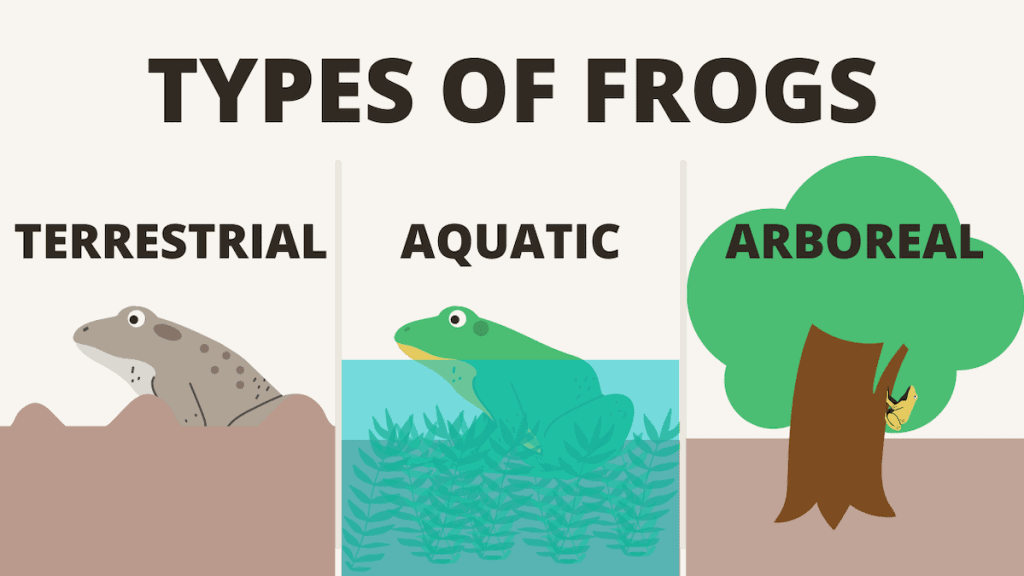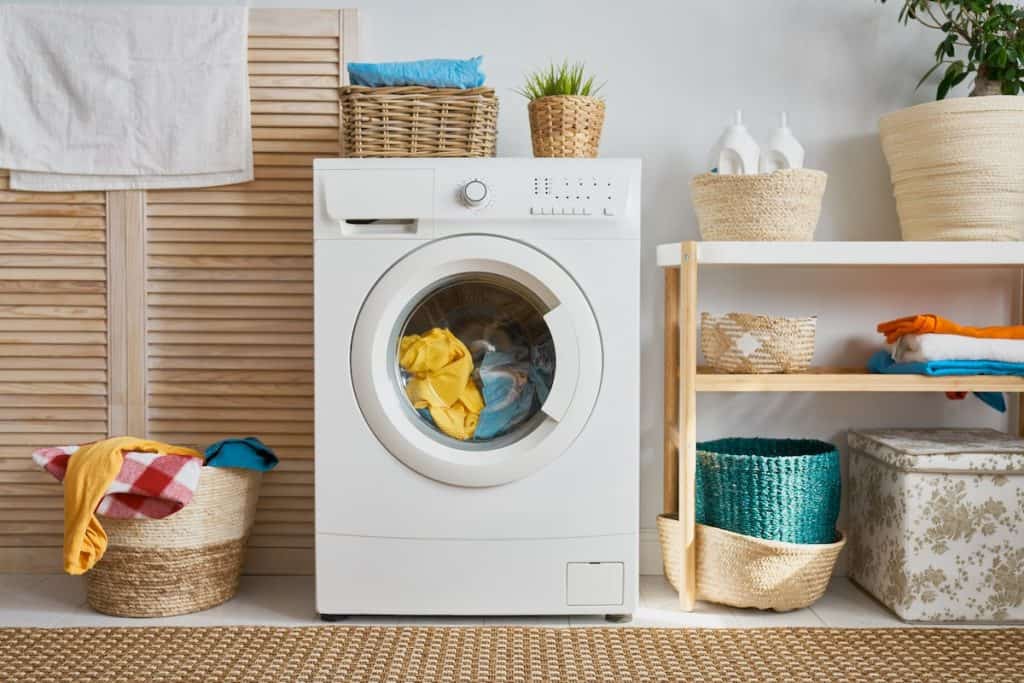How To Get A Frog Out Of Your House
My outdoor pet toad made it's way into the house and got lost somewhere when I was a kid and my mom freaked out. It is never fun to find out that you have a frog (or multiple frogs) running loose inside your house, but don't worry. There are ways to find and catch them before things go too far!
If a frog is hopping loose in your house, it will most likely be in a warm, damp place like the bathroom, kitchen, laundry room, or basement. You can attract the frog to a specific location in your home by putting damp paper towels down on the floor and checking them periodically.
Here are some more specific examples of places where you could find a lost frog in your home, how to safely catch and release a frog, tips for keeping frogs out of your house, and what to do to frog-proof your home to not attract them back. Find out why there are frogs in your home in this guide on our blog.
Enjoyed this video? 🙂 Subscribe to our YouTube channel for more!
Generally, if you have a lost frog in your home, it will be in a damp or humid room or area such as the in bathroom shower or near the toilet, in the kitchen under the fridge or sink, in your basement under the washing machine, or in planters if you have indoor plants.
Frogs are cold-blooded amphibians meaning they need both warmth and water to survive. Too much time in the sun can wreak havoc on their skin through which they breathe and drink, so they tend to linger in wet humid areas to stay adequately hydrated and moisturized. This being the case, you should first look in wet and humid places in your home.
Different Types of Frogs Hide in Different Places
Keep in mind that the type of frog may dictate where they are hiding. If you know which type of frog is lost in your home, you may have a better chance of finding it. If not do not worry, we provide a long list of places to look. But in short:
- Tree Frogs climb, so they could be above ground
- Aquatic Frogs swim, so they are probably in a pool of water
- Toads burrow, so they are probably hiding under or in something humid

Learn more about different types of frogs in this article on our blog.
The Frog May be in Your Bathroom
If you are looking for a lost frog in your home, the best place to start is in the bathroom, notably in the shower, which tends to be the most humid room in people's homes. Tree frogs climb and aquatic frogs swim so depending on the type of frog that is lost, you should look at different heights.
Tree Frogs Can Stick to Things in Your Bathroom
- On the shower head
- On the shower walls
- In the bathroom sink
- Under the bathroom sink
- Around the toilet

Aquatic Frogs May be in Water in Your Bathroom
- In the toilet
- In the sink
- In the bathtub
- Near the shower drain
- In the bucket under the sink
- In any pooling water
If you have a bucket under your leaky sink and know that an aquatic frog is loose in your home, check there first. Many frog species are nocturnal, which means they may be hiding in the dark areas of your house and under the sink in a bucket of water may be a great place for the frog to hide.
The Frog May be in Your Kitchen
If you are sure the frog is not in your bathroom, move on to the kitchen. This is anther room in the home that tends to be humid since it has running water and is generally used multiple times a day. Here are places you can look for a lost frog in your kitchen:
- Under the fridge
- Under the dishwasher
- In the skink
- In the dish rack
- In the bucket under the sink
- In the dishwasher if it was left open
- Under the fridge
- Under or in any other appliance that uses water in your kitchen
You could check your cupboards although there are less chances you may find a frog there unless they are humid. If you left out any dirty pots, pans or dishes with water in them, check those as well.
The Frog May be in Your Laundry Room
If your laundry room is a separate room in your home, you should check there as well. Some people have their laundry room in their kitchen or in their basement, so when you are looking in those rooms also consider checking in the following places:
- In the washing machine
- Under the washing machine
- In the dryer vent (if it's easily accessible)
- Under the dryer

Laundry rooms often end up being humid and warm, so they can make a great hiding place for a frog. If you happen to have a pile of wet laundry in your laundry room, definitely carefully check in there too. The frog could have burrowed into the wet laundry and may be breathing and drinking among your underwear!
The Frog May be in Your Basement
So you didn't find the frog in your bathroom, in your kitchen or laundry room. If you have a basement, defiantly move on to this area of your home. If the frog has been lost for a while, it may have wondered it's way to what can be a damp and humid room in people's homes.
Here are some key places to look for a frog in your basement:
- Under moist carpets
- Under damp rugs
- In any buckets of water
- In any puddles or pooling water
- Under or near the water heater
- If your basement is not finished, a toad may burrow in the ground
If you happen to have a bathroom, kitchen or laundry room in your basement, I would go back through the lists above to look in specific places in these rooms to see if the frog is hidden there (CTNF).
The Frog May Be in Your Planters
If you have potted plants in your house, you might want to look there as well. The moisture in the soil, as well as the plant itself, might attract the frog. Warmth and moisture make plants very attractive to lost frogs. If you have a greenhouse or any humid, plant filled rooms in your home, definitely check them thoroughly.

Looks for a lost frog in:
- In planters
- Under planters
- In the soil in planters (for toads)
- On the soil in planters
- On plant leaves
- In any interior water features
This is actually where I found my lost pet toad – it was hiding in a planter in the living room 🙂
If you have a sun room that is facing North, there is a chance the frog may be there. If the sun room is facing West or South, there may be less chances of find a frog in that room since it is probably hotter and dryer than a frog would enjoy.
Other Places Frogs May Be in Your Home
If you have looked everywhere and still have not found the frog, head to the most Northern rooms of your home. These rooms tend to be more humid since they do not get as much sun as the other rooms in your home. Look everywhere you can in those rooms including the following depending on the type of frog that is loose.
Tree Frogs Stick to Things in Your Home
Look to see if a Tree Frog is stuck to the following things in your home:
- Condensation-covered windows
- Plastic blinds that cover condensation-covered windows
- Humidifier if you have one
Aquatic Frogs Sit in Water
Look to see if an aquatic frog is sitting to the following things in your home:
- Any bucket of water in your home
- Any pooling water in your home
- Under a humidifier or in the humidifier tray if you have one
Toads Hide Under Things
You may not have found the frog because you are actually looking for a toad. Toads do not stick to things or sit in water, they hide under wet objects and burrow in holes.
Here are some places to look for a lost toad in your home:
- In any humid crevices in your home
- Under any humid carpeting or rugs
- Under a humidifier if you have one
- Under any furniture that could have accumulated humidity
It might also be a good idea to try and find the source of the frog's entry. It might have just slipped in through an open door or window, but it can't hurt to check in other places like plumbing, or cracks in the walls/floor.
How to Save The Lost Frog And Your Family
Before you even start looking for the frog, or if you have tried everything and still have not found it, here are some crucial steps you should take to save the frog from being eaten, from dehydration, or from dying and stinking up your home.
- Get your pets out of the way: no cats or dogs should be around while you search for the frog
- Make sure any other predators are not present until you find and release the frog in a safe place
- Keep small children out of the way and occupied in a frog-free room
- Increase the humidity in your home to at least 60% until you find the frog
- Soak a towel or paper towel and place it somewhere dark that the frog can access
- Put a tray or dish of clean water in a dark area if you are looking for an aquatic frog
- Watch where you step!
Enjoyed this video? 🙂 Subscribe to our YouTube channel for more!
Keeping your cat or dog around could cause even more problems if they lick or eat the frog, so make sure they are in a frog-free room when you start your search. If your dog or cat happened to ingest the frog, they could get sick or even die from the intoxication. If you think that your dog or cat has eaten the frog, get them to a veterinary clinic as soon as possible. If you aren't sure, look for symptoms of intoxication like seizures or foaming at the mouth.
Keeping your home humid can help the frog stay hydrated and able to breathe. Putting out wet towels can attract the frog to a specific location. Put the towels or dish of water in a dark place like an open closet since frogs are nocturnal and will search for dark, wet places to hide. Check them periodically to see if the frog was attracted to the spot.
Safely Catch And Release The Frog
Once you have finally found the frog, it's time to safely catch it following specific precautions for you and for the frog:
- Wash your hands for at least 20 seconds with warm water and soap
- Wear gloves if possible
- Get your hands wet before handling the frog
- Carefully scoop up the frog holding it under its arms
- Use a tight-knit net if you prefer and let the frog sit on your hand
- Release the frog in a predator-free humid place under 1h and within 25 m (80 ft) from your home
- Avoid touching your face and wash your hands again after releasing the frog
Please be sure to read our complete guide on safely catching and releasing a frog for more information on each of these steps to be sure to protect yourself and the frog from harm. Be sure to read that guide since relocating frogs may be illegal in your jurisdiction depending on the species and there conservation status.
Check out our guides on how to keep frogs off your property below for more information:
- This is Why There Are Frogs in Your House
- How to Catch a Frog in Your House
- What to Do if You Find a Frog in Your House?
- How Do Frogs Get In The House?
- Toads in Your Window Well: Why & What to Do
- How to Relocate Frogs
- How to Get Rid of Frogs Without Killing Them
- 5 Natural Frog Repellents That Work
Questions Related to Finding a Lost Frog in Your Home
Why are There Frogs at Your Door? Generally, frogs are attracted to people's doors because of the presence of humidity created by water features, a leaky hose, sprinklers, damp decks, plants, and swimming pools.
Why Are There Frogs in My House? Generally, frogs are attracted to people's homes because of the presence of humidity created by water features, a leaky hose, sprinklers, damp decks, plants, and swimming pools.
How do You Find a Lost Frog? You can find a lost frog by attracting it to a specific location in your home by putting damp paper towels down on the floor and checking them periodically. A lost frog will most likely be in a warm, damp place like the bathroom, kitchen, laundry room, or basement.
How To Get A Frog Out Of Your House
Source: https://toadsnfrogs.com/lost-frog/
Posted by: eaglewelinigh.blogspot.com

0 Response to "How To Get A Frog Out Of Your House"
Post a Comment